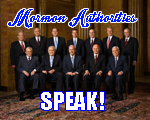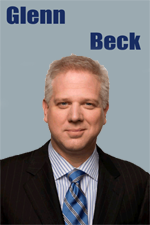Piecing Together the First Vision
Paul Derengowski, ThM
Anyone familiar with the beginnings of Mormonism is aware of the great importance that Mormons place upon the foundational experiences of their first president and prophet Joseph Smith. In fact, the whole Mormon belief structure rises or falls on his testimony: one's salvation hinges upon the reception or rejection of it.1 There is no middle ground. The question arises, however, about whether Joseph Smith's spiritual experience, known as his "First Vision,"2was truly that unique. The unusual religious experiences common in his day convinces objective readers of the non-originality of his story.3 This is especially true when one examines the striking parallels between Smith's First Vision and the conversion experience of the well-known lawyer-turned-evangelist, Charles G. Finney.
PARALLEL #1: SPIRITUAL STRAITS
Joseph Smith was born in Sharon, Vermont in 1805. Later, his family moved to Palmyra, New York, in the western part of that state. "Central and Western New York in the early nineteenth century was a 'boom' country with all the characteristics of the recently settled and rapidly expanding community."4 With that expansion of new settlements the atmosphere was fertile for religious revival. Baptists, Congregationalists, Methodists, and Presbyterians were only a few of the more established denominations vying for the souls of men during the excitement of settling the new territory.
It was during the religious fervor of the day that Joseph Smith became perplexed concerning his spiritual destiny. Viewing all the religious competition of the day confused him. He did not know which denomination to join. Therefore, upon reading James 1:5 he set out to ask God which denomination was correct and with which one he should align himself. This supposedly occurred in the spring of 1820. H. Michael Marquardt and Wesley p. Walters, however, report that newspaper accounts, religious periodicals, church records, and personal narratives show no signs of a revival in Palmyra in 1820; the closest date for a revival was 1824-25.5 This greatly increases the likelihood that Smith's story was modeled after Finney's.6
Charles G. Finney, on the other hand, was born in Litchfield County, Connecticut in 1792. As a youth his parents also moved to Central New York where he grew to maturity. Although he spent time in service in the local Presbyterian Church as a choir director, Finney did not trust ministerial advice, much less God Himself. In fact, he often scoffed at the dogmas and practices of those who claimed to be Christians.7 However, at the age of 29 he began to experience serious spiritual despair that culminated in a need to personally seek the face of God. This occurred in October of 1821, while he was serving his apprenticeship in Adams, New York.
PARALLEL #2: GRAPHIC GROVESOne clear, spring morning, Joseph Smith journeyed west of his parents' farm into a "beautiful grove"8 to petition God regarding his dilemma. After "having looked around...and finding [himself] alone, [he] kneeled down and began to offer up the desires of [his] heart to God."9 It was supposedly the first time in young Joseph's life that he had ever endeavored to "attempt to pray vocally."10
Similarly, Charles Finney knew of a "grove of woods"11 that lay north of Adams. He set forth one morning for work and was compelled that he must accept God or die. He "turned and bent [his] course for that grove of woods, feeling that [he] must be alone and away from all human eyes, so that [he] could pour out [his] prayer to God."12
PARALLEL #3: PARALYZED PRAYERSNot long after Joseph began his petition "the enemy" subdued him.13 He could not speak, for his tongue had been bound. Hearing noises in the woods near him, Smith assumed that other persons were walking around in his presence.14 He tried several times to make his requests known to God, but without success.15 The young inquirer despairingly supposed that he was "doomed to destruction."16 He had never before encountered such supernatural strength.
In like manner, Charles Finney determined to give his heart to God, but upon making his petition he found that he could not pray. When he attempted to pray he became "dumb," having "nothing to say to God." Rustling of leaves nearby led him to believe that other individuals were in his presence. Ultimately that thought led him to such a sense of conviction of personal wickedness that it took possession of him. Charles attempted to pray several times without success, leading him to the verge of despair. He recollected that "a great sinking and discouragement came over me at this point, and I felt almost too weak to stand upon my knees."17
PARALLEL #4: LOFTY LUMINARIESUpon deliverance from the clutches of the enemy, Joseph witnessed a pillar of light descending upon him until it enveloped him.18 He became filled with the "spirit of God,"19 causing him also to be "filled...with unspeakable joy."20 At this time both God the Father and Jesus Christ appeared to him, of which Joseph petitioned them "which of all sects were right - and which I should join."21 He was admonished that he should join none of them, for they were all wrong! The experience lasted "one brief hour."22
Charles envisioned a light also, but it was scripturally caused. Reflecting upon Jeremiah 29:12-13, the passage "seemed to drop into [his] mind with a flood of light."23 With that he was convinced that he could perform his vow of accepting God that day. In the midst of such spiritual ecstasy he left the woods and returned to the village. After dinner Charles wished to "pour out [his] whole soul to God."24 He retired to the Counsel room of his law practice, where it was dark, but "it appeared to [him] as if it was perfectly light."25 In that "lighted" room he came face to face [emphasis his] with Jesus Christ.26 No words were exchanged, but Finney "fell down at his feet and poured out [his] soul to him."27 Shortly thereafter, Charles received a mighty baptism of the Holy Ghost, which he characterized as a "wave of electricity" or "waves of love."28 The event lasted until late in the evening.29
PARALLEL #5: REJECTED REPORTSJoseph shared his visionary experience with those whom God had previously denounced as "wrong" and "corrupt."30 To his surprise he was treated lightly and with great contempt.31Although only a boy of young age, he soon found that his visions and revelations were not welcomed, and that "men of high standing would take notice sufficient to excite the public mind against [him]," creating "bitter persecution."32Being satisfied in mind that he had seen a vision, however, Smith endured, thereafter translating the Book of Mormon and starting the Mormon Church.
Charles, too, endured persecution for sharing his experience. Certain young men in his neighborhood had been warned to avoid him, for he "was a very careless young man about religion."33To associate with Finney was tantamount to diverting oneself away from conversion. The neighborhood's opinions caused him to doubt his own eternal security. He perceived that others thought of him as possibly delusional or even "crazy."34Nevertheless, after falling asleep the day of his conversion, and then awaking, he experienced "the great flow of the love of God" in his heart.35 Finney even visited Joseph Smith's community in 1831.36
CONCLUSIONThe role that Joseph Smith plays in Mormonism cannot be underestimated. His character is central to the establishment of the Church of Jesus Christ of Latter-day Saints and the salvation of its members. Important is his testimony regarding what he saw on a spring, New York morning in 1820. At first glance his experience seems extraordinary. However, upon further review, similar experiences shared by others of his the day, coupled with chronological problems, seem to negate the uniqueness of Joseph Smith's testimony. More important, the parallelism between Smith's testimony and Charles G. Finney's prior written declaration seems also to negate Smith's story as original.
Did Joseph Smith really see anything? Only God knows for sure. Yet, based on the above, one conclusion at which readers could arrive is that Joseph Smith did not see anything at all. More than likely, he culled from the experiences of others, Charles Finney specifically, editing and reshaping them to form his own First Vision.
REFERENCES1 Joseph Fielding Smith, Doctrines of Salvation, vol. 1 (Salt Lake City: Bookcraft, 1954), p. 189.
2 The account was not actually written until 1838 and was not officially published until 1842 (Hugh Nibley, "Censoring the Joseph Smith Story," in The Improvement Era [Salt Lake City: Mutual Improvement Associations], 64:490). Also, there are many conflicting versions of this first vision.
3 Donna Hill, Joseph Smith: The First Vision (Midvale, Utah: Signature Books, 1977), p. 53.
4 William Charles Walzer, "Charles Grandison Finney and the Presbyterian revivals of Central and Western New York" (Ph. D. diss., University of Chicago, 1911), 5-6.
5 H. Michael Marquardt and Wesley P. Walters Inventing Mormonism: Tradition and the Historical Record (Salt Lake City: Smith Research Associates, 1994), p. 15.
6 Charles Finney conducted revivals in Palmyra in 1831, giving Smith ample opportunity to encounter Finney's testimony before writing his 1832 version of the First Vision..
7 Kenneth Scott Latourette, Christianity in a Revolutionary Age: The 19th Century Outside Europe, vol. III, p. 28.
8 B.H. Roberts, A Comprehensive History of The Church of Jesus Christ of Latter-day Saints (Provo, Utah: Brigham Young University Press, 1965), 1:53.
9 Ibid.
10 Joseph Smith, History of the Church, 1:5.
11 Richard A. G. Dupuis and Garth M. Russell, eds., The Memoirs of Charles G. Finney (Grand Rapids: Acadamie Books, 1989), p. 18.
12 Ibid., p. 19
13 The late Prophet of the Mormon Church, Spencer W. Kimball, identified this "enemy" as none other than Lucifer or Satan himself, Teachings of Spencer W. Kimball, p. 428.
14 Personal Writings of Joseph Smith: Diary 1835-1836, p. 75.
15 Ibid.
16 B. H. Roberts, A Comprehensive History of the Church of Jesus Christ of Latter-day Saints, 1:54.
17 Richard A. G. Dupuis and Garth M. Russell, eds., The Memoirs of Charles G. Finney (Grand Rapids: Acadamie Books, 1989), p. 20..
18 Ibid.
19 Scott H. Faulring, An American Prophet's Record: The Diaries and Journals of Joseph Smith (Salt Lake: Signature, 1989), p. 5.
20 Dean C. Jesse, The Papers of Joseph Smith, 1:126.
21 Joseph Smith, History of the Church, 1:6.
22 B.H. Roberts, A Comprehensive History of the Church of Jesus Christ of Latter-day Saints, 1:57.
23 The Memoirs of Charles G. Finney, p. 20. See also footnote 21.
24 Ibid., p. 23.
25 Ibid. See also The Autobiography of Charles Finney by Helen Wessel, ed. (Minneapolis: Bethany Fellowship, 1977), p. 21.
26 Ibid.
27 Ibid.
28 Dupius and Russell, The Memoirs of Charles G. Finney, p. 24.
29 Ibid., p. 24.
30 Smith, History of the Church, 1:6.
31 Joseph Smith, History of the Church, 1:6; B.H. Roberts, A Comprehensive History of The Church of Jesus Christ of Latter-day Saints, 1:56.
32 Smith, History of the Church, 1:7.
33 The Memoirs of Charles G. Finney, p. 24.
34 Ibid., p. 24.
35 Ibid.
36 Robert N. Hullinger, Joseph Smith's Response to Skepticism (Salt Lake: Signature, 1992), p. 40.





